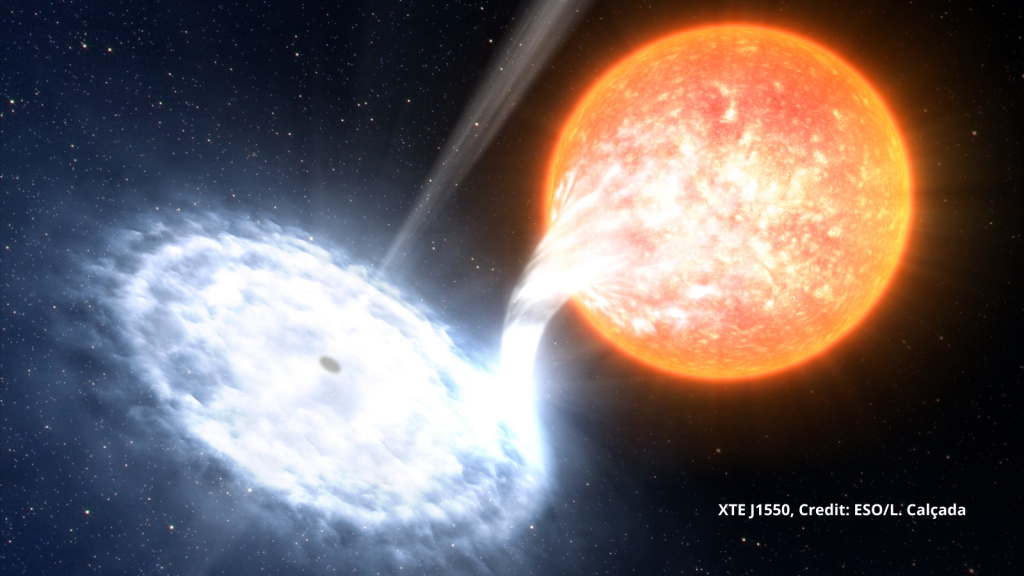Using three different telescopes, an international team of researchers has found patterns in the light coming from an X-ray source. These patterns of light tell us that the X-ray source is ejecting a stream of energetic particles diffusing into its surroundings. To their surprise, the signature of this “wind” could be seen in visible light.
They were investigating an X-ray transient – a normal star and a black hole orbiting around a common center. When the black hole sucks up material from the companion star, it creates a swirling, hot, gaseous disk around itself that glows, releasing X-rays. They are called transients because they live most of their life in a “quiet” state, not showing much activity and have only few, brief, luminous outbursts. Looking at these X-rays is how scientists discovered the first known black hole – Cygnus-X1.
In 1993, scientists discovered one such X-ray transient upon its first reported outburst – and was named “GRS 1716-249”. After twenty-three years of quintessence, it had another episode in 2016 which gave astronomers the golden chance to observe its properties in greater detail. One team of astronomers, led by Virginia A. Cuneo of Instituto de Astrofisica de Canarias in Spain, has published their findings on its behavior in the October issue of Monthly Notices of the Royal Astronomical Society. In their study, they used spectroscopic data from the South African Large Telescope (SALT), Gran Telescopio Canarias (GTC), and Very Large Telescope (VLT) observatories. The data was collected on 18 different sessions, spread over a duration of 6 months.
Light consists of different colors, and spectroscopy is a way to split light into the different colors it contains and to look at the brightness of each separate color. Each color is associated with a wavelength, measured in nanometers. We can tell if a star or a galaxy is moving towards us or away from us by looking at individual lines in its light’s spectrum.
When an object is moving away from us, the wavelength of light coming from it increases – and the object appears redder. If it’s moving towards us, the wavelength decreases and the object appears bluer. Looking at the exact amount of shift towards redness or blueness tells us how fast the object is moving.

Spectral lines due to certain elements. Image Courtesy: NASA
The team inferred from patterns in spectral lines, particularly those emitted by hydrogen and helium, that there is a wind being ejected from its accretion disk, directed towards us and moving at a speed of roughly 2,000 kilometers per second. This “wind” is nothing but a stream of gas drifting across space – and, don’t worry, is too distant to ever harm us.
Somewhat ironically, they also found evidence that some of the material is actually moving away from us – at a speed they estimate to be ~1,300 kilometers per second. One scenario they think explains this irony is that some of the wind material could be failing to escape and possibly be flowing back into the disk again. This in-flow of the ejected stuff is quite unusual, which makes GRS 1716-249 the sixth object of its class to have shown this feature.
Though, they believe that an in-flow may not be the only possible explanation. In their paper, they note another possibility being that the object could be oriented at an angle from us – that is, instead of looking at it face-on, it is being looked at from a nearly edge-on view. This could, in principle, produce the same effect being observed.
The origin of this feature shall be debated, but the researchers believe that future studies will tell us whether this behavior is unique or is shown by most X-ray transients.


